Detector Collector?
By Nikko Vellios
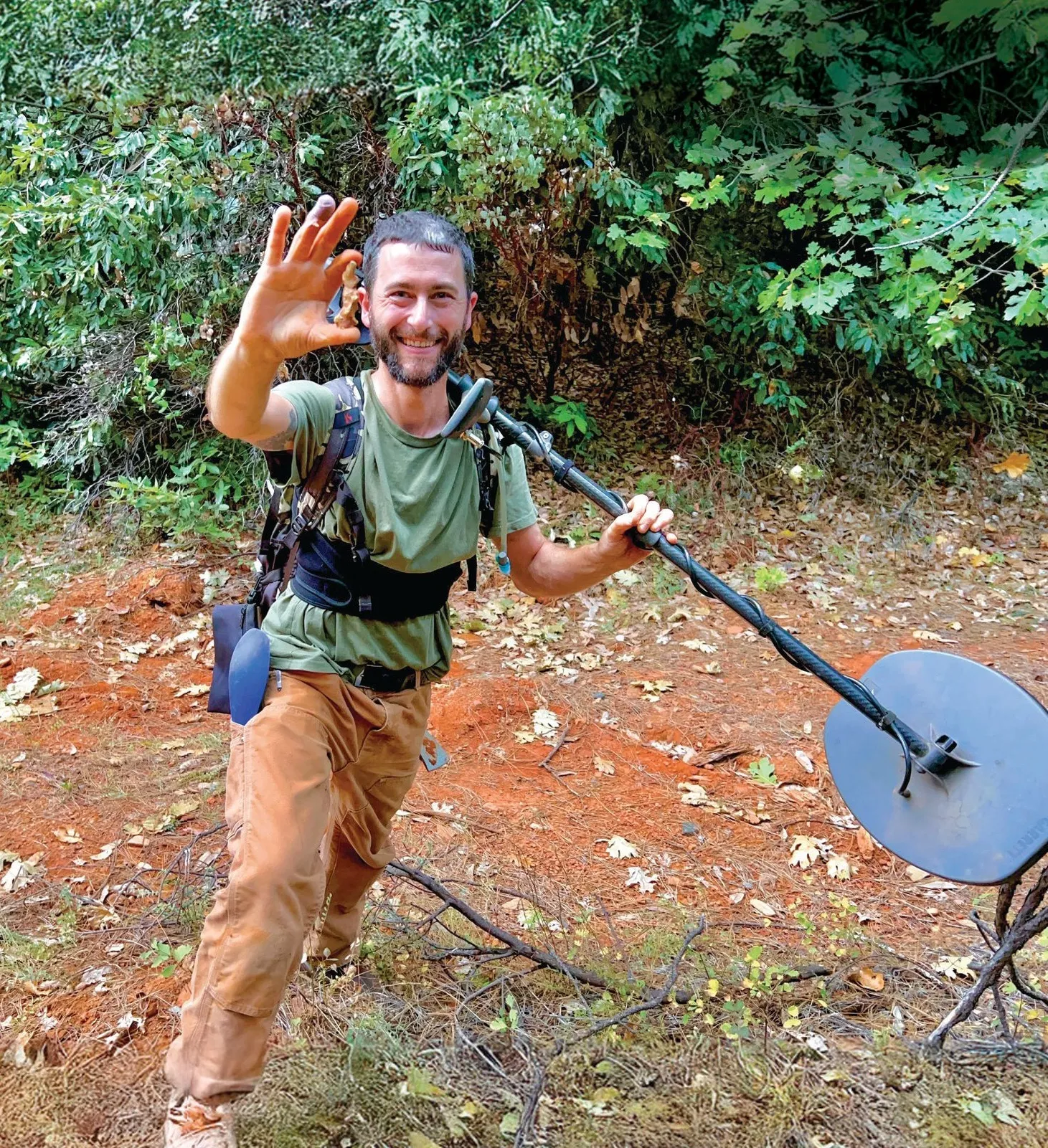
Here’s How to Know Which Detector to Pull and When
This was one of those rare hikes back where the detector felt lighter, the dirt less stubborn, and even the poison oak looked friendly. That's what 112 grams of confirmation bias in your hand will do.
With each hop, I found myself perched precariously on yet another boulder, each one slicker than the last. Surrounded by increasingly deeper water, I utilized my detector shaft for balance. This morning I was venturing up a tailout toward a pool of calm water at a fork of the Stanislaus River in Northern California.
It was midsummer in the Sierra Nevada, but the 100-degrees-plus temperatures in the foothills did little to keep me from feeling a tad on edge, even with my overpriced makeshift trekking pole. Evidence of the harsh winter months prior was manifested in the clear, steady flow of water below.
Peering behind me, I caught my friend holding her phone up. She was taking photos, quietly rooting for me. Or perhaps anticipating the hilarity of a potential icy dip as much as she was hoping to capture the moment of glory as I hoisted a boulder of gold from the unforgiving motherlode. Pausing to assess my surroundings, I looked up in awe at the nearly vertical hills on all sides.
It never ceases to amaze me what those who flocked to California from the east endured. During a time when folklore, rumors, and tall tales by tipsy miners flooded the press and letters headed back east, I find it hard to believe the landscape needed any embellishment. How does one top what Mother Nature blessed us with? The contrast between some of the most treacherous yet beautiful terrain on Earth is enough to humble even the most hardened adventurer.
Downstream lay the old workings of a torn-apart quartz outcrop. Pieces were strewn hundreds of feet down into the canyon I ventured to that day. Some fearless prospector climbed up there to begin work on an adit, likely with hand tools and desperation few of us have felt. Seeing as no road or mule trail went in or out, it was surely barren and abandoned. Yet, there I was, teetering on a dinner-plate-sized slab of rock poking out of a deeper section of the river below.
Concerned about driving home with river-soaked britches seemed farcical at that moment. Suddenly, I pictured Mark Twain and had an uncomfortable, albeit comical epiphany: I was Dan'l Webster's frog, but instead of a belly full of lead, it was my head devoid of experience. I was outmatched before I left home that morning. We were a mere Minié ball's flight away from the historic town of Angels Camp - known locally as Frogtown - where Twain's name and character are embedded not only in the names of schools and businesses, but the community's culture.
Cautiously navigating the gravel bar, I fired up the Nokta thinking, "If it finds rings in parks, why not nuggets in rivers?" A few hours later and a pouch full of aluminum, iron, and lead trash, I had my answer. Good detector, wrong battlefield. Lesson learned.

A few hours later and a pouch full of aluminum, iron, and lead trash...
It's said the aforementioned folklore and tall tales filling the saloons by the local miners inspired the writing of "The Celebrated Jumping Frog of Calaveras County." Maybe by a curious archetype of myself, walking in one evening, tail between his legs, humbled after chasing it all week in search of that life-changing chunk of heavy metal.
Cautiously heading back to the gravel bar, I fired up the coin and relic detector I had just nabbed off a classified listing. On the hunt for gold nuggets, I collected a good share of iron, aluminum, and lead trash.
Only a few weeks earlier, I’d read about a local prospector finding a Nerf football-sized quartz gold specimen sitting on the surface of a pasture in my home county of Calaveras. Promptly, I did what too many others had done and searched for a good deal on a decent metal detector. I came across a Nokta Anfibio, claimed to be an excellent detector for rings, coins, and relics. To my mind, if it could find a gold ring in a park, surely, it would find a nugget on a gravel bar. If only it were that simple.
"Brand new? Why are you selling it?" I asked the young man. His reply didn't make sense at the time, but it does now: "It's my father-in-law's. He said it's too complicated and prefers his old White's." Curious, I looked up White's Detectors only to find they'd gone out of business. The White's detectors I found for sale were faded, mostly boxy, clunky, and definitely looked outdated. This Nokta was sleek, waterproof, and had a plethora of settings. It seemed like the perfect machine for me. I was going to find a big nugget, and I had the right tool for the job.
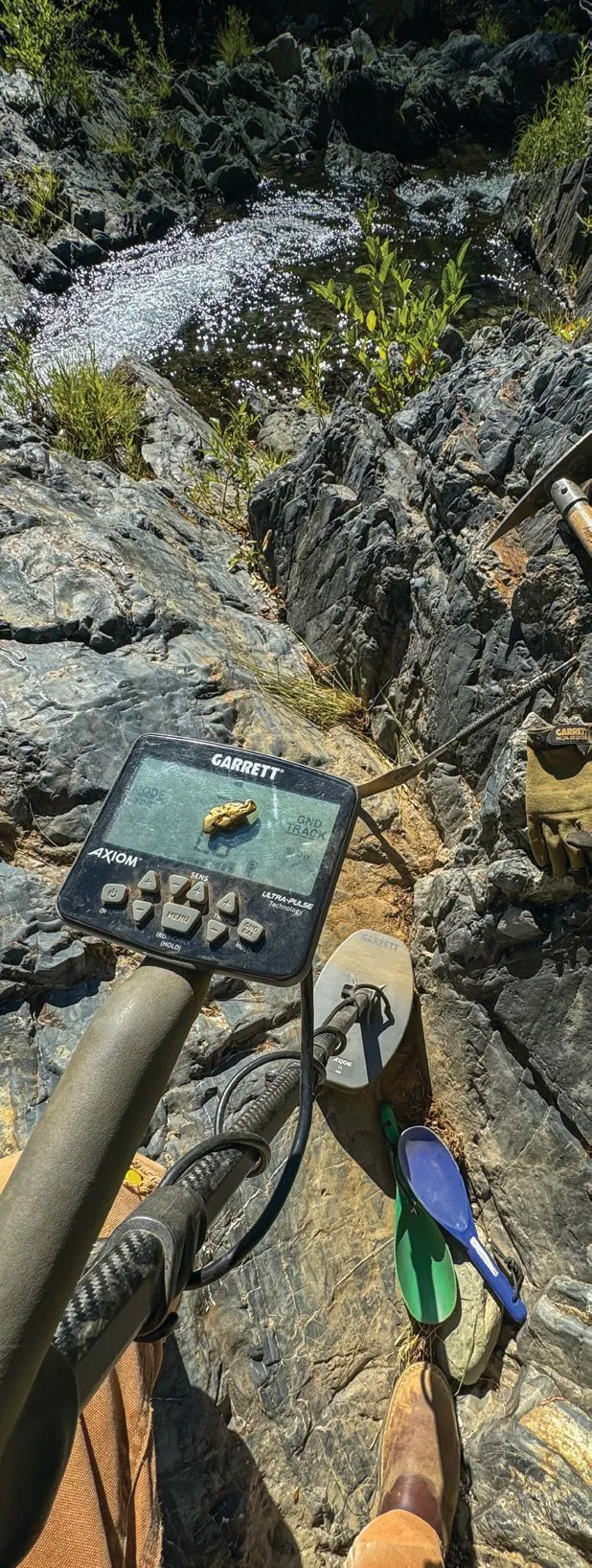
This may be a good time to offer what may be some of the best advice you'll receive if you're looking into hunting for natural gold with a metal detector, but don't currently own the equipment: Don't research your first one entirely on your own. Don't purchase a machine simply because you read about it here in this article. Join a gold prospecting club like GPAA to connect with others who are successful at digital prospecting with a metal detector, and talk to several dealers who specialize in gold prospecting detectors.
An observation I've made numerous times is that those who run a certain make or model tend to clique up. Or the most successful and experienced of a group finds more gold, so the rest flock to buy the same machine thinking it will carry over to their success. Avoid making this mistake.
From a prospector's point of view, there are two primary consumer markets for metal detectors: gold prospecting, and everything else. Hunting gold nuggets with a metal detector - aka digital gold prospecting - is very niche. Those who are masters at coin hunting are, in my experience, often out of their element in the gold fields. If you want to detect gold nuggets, your best odds are being where a good number of them have been found, but only armed with the proper tools.
Gold country - that's a term used often to describe the rich, gold-bearing regions of California. While fitting, gold can be found in every state, province, and territory on Earth. But what I'm referring to is not just any gold country, rather, big gold country: California, Alaska, Australia, Nevada, to name a few. Once there, seek those who are successful at digital gold prospecting in that region. That's the easy part. Now all you have to do is get them to talk. Easier done than said, or however that saying goes.
I hope to be the segue that guides you to make an informed decision on which detector(s) to use to suit your area by sharing my experiences. I spent much of the last three years prospecting full-time, offering guided nugget hunting trips, and conducting field training. Spring 2024 I set out to find gold with every modern gold prospecting detector in as many environments as possible.
As an engineer, I researched metal detector theory and design, built several detectors and search coils, and frequently consulted with local miners to help them outfit their operation with the best tools for the job. Whether that be a $300 pinpointer that can detect a speck of gold smaller than a pinhead, a $9,000 off-the-shelf detector setup so heavy you need a body harness and two hands to "comfortably" operate - but will sound off on a 3-ounce nugget 4 feet deep - or building search coils so large they must be dragged behind an ATV on a plastic sled to find one life-changing piece in an area the size of Washington, D.C., the kind of discovery that made the headlines back east, igniting the fever of another round of hopeful prospectors headed west.
We're an odd bunch, us prospectors, I'll admit. Channeling the 49er within, we hold hopes of striking it big, knowing the odds lead to a hobby, not a career. Most of what we find detecting is small, but it's bigger than what you'll likely find in your sluice box. So let's get into the point of this article and why you're all still hanging on.
Spoiler alert: Expect to pay around $700 before tax for a new detector suitable for finding the size of gold that you're likely to find - very small pieces. If you want big gold, you could get lucky and find a football-sized nugget sunbathing adjacent to a cow patty. You could, like me, find a 3.6-ounce slab sitting inches beneath the surface of a forest road. You could also buy a lottery ticket and win the Powerball. For those big pieces, you need to look deep, real deep, so prepare to budget four to five figures.
Tapping into the used market can save you a pretty penny, but be wary of counterfeit or faulty detectors. Dealers often have clearance, open-box, and trade-ins that are tested, confirmed, and guaranteed. Some of these machines also have transferable original manufacturer warranties.
Which brings me to the three biggest factors playing a part in picking which detector to swing in a given area. There are two factors you generally can't control, unless you have unlimited access to premium ground: Ground conditions and size of gold. The third factor we do have at least some control over is the detector technology we employ.
Metal detector technology is complex, crossing an array of disciplines, including engineering, chemistry, metallurgy, and physics. After allocating much of my free time over the last few years to studying and practicing metal detector theory, I've gained valuable insights, but recognize this field is continuously evolving at a pace I only hope to keep up with.
There will always be elephant left over for the next meal. For now, let's take a small bite, focusing on the two primary classes of modern detectors and how to apply them accordingly to your advantage: Very Low Frequency and Pulse Induction machines.
VLF (Very Low Frequency) Detectors
VLF detectors are typically defined as operating under 15 kHz to 18 kHz. However, for gold prospecting, detectors operating at this low frequency do not detect natural gold and small targets well. Gold in its pure form is highly conductive. Natural gold, however, is never pure. It is primarily alloyed with silver and copper, significantly reducing its conductive properties. So much so, that gold nuggets are considered one of the more difficult treasures to detect.
Raising the frequency above 20 kHz increases sensitivity to smaller, less conductive targets like small nuggets. Once you reach about 200 kHz, you hit the effective limits of detecting metal objects in the ground via VLF technology. Things begin to go awry as the laws of physics take over and the ability to distinguish the minute shifts in ground conductivity wanes. This makes ground balancing near impossible. Every rock, pebble, grain of sand, mineralization pocket, and even small voids or wet spots in the soil can trigger a signal.
Your detector must run stable to be an effective tool. To achieve balance, VLF detectors designed for gold prospecting typically operate between 40 kHz and 71 kHz. Regardless, they are all commonly referred to as VLFs, or high-frequency VLFs. While these are all Phase Shift Detectors, sticking with the vernacular will save you a headache.
Popular choices among VLF prospecting detectors include:
- Minelab Gold Monster 1000 - 45 kHz
- Minelab Equinox 800/900 & Manticore - 4 kHz-40 kHz
- Garrett Goldmaster 24k - 48 kHz
- Fisher Gold Bug II - 71 kHz
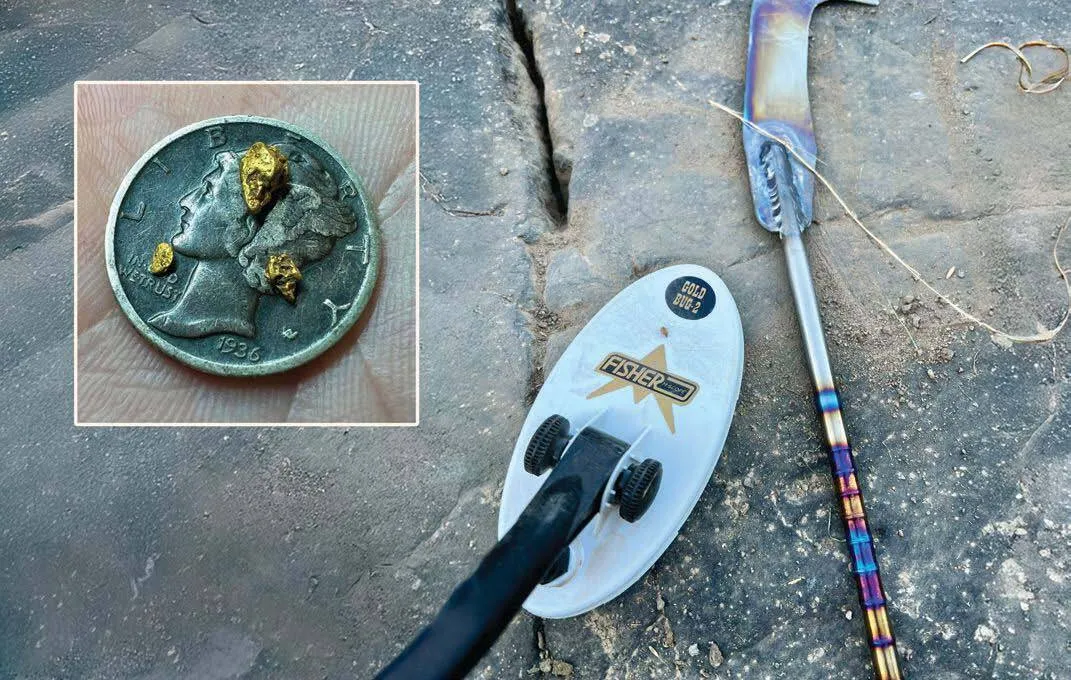
The dime shows a zoomed-in look at what came out of that crack - nuggets so small most machines wouldn't even chirp. At 71 kHz, the Gold Bug 2 is purpose-built for this kind of target.
VLF Detector Advantages
Price: Comparatively inexpensive at $700-$1,800 USD.
Ground Conditions / Target Identification & Discrimination: Using the VDI (Visual Discrimination Indicator), a proficient operator can cherry-pick high-value targets, avoiding digging up as many nails, ammunition casings, and other trash targets. While some detectors will only display ferrous or non-ferrous, it's still quite helpful.
Most will give a VDI number indicating the detected target's phase shift from -19 to 99, or a slice of that range. Lower numbers lean toward iron. Low to low/mid-range you find natural gold, lead, small bent iron wire. Mid-range for some clad coins, brass, foils, silver alloys. Upper range for aluminum, silver, non-alloyed gold like bullion and some old coins. VLF detectors are the go-to technology for coin and relic hunters for this very reason. This is also why they are popular when hunting areas with metal trash targets, which you can expect virtually anywhere there is detectable gold.
Tip: Most VLF detectors will have different audio signatures for different target types. The most successful operators primarily use their ears versus watching the display. Some models allow notching out (ignoring) entire ranges of the VDI, making iron and aluminum pull tabs, for example, completely disappear. Save this as a last resort or it will cost you gold. I’ve dug plenty of gold that read as iron, and plenty of gold sitting underneath or next to a piece of iron.
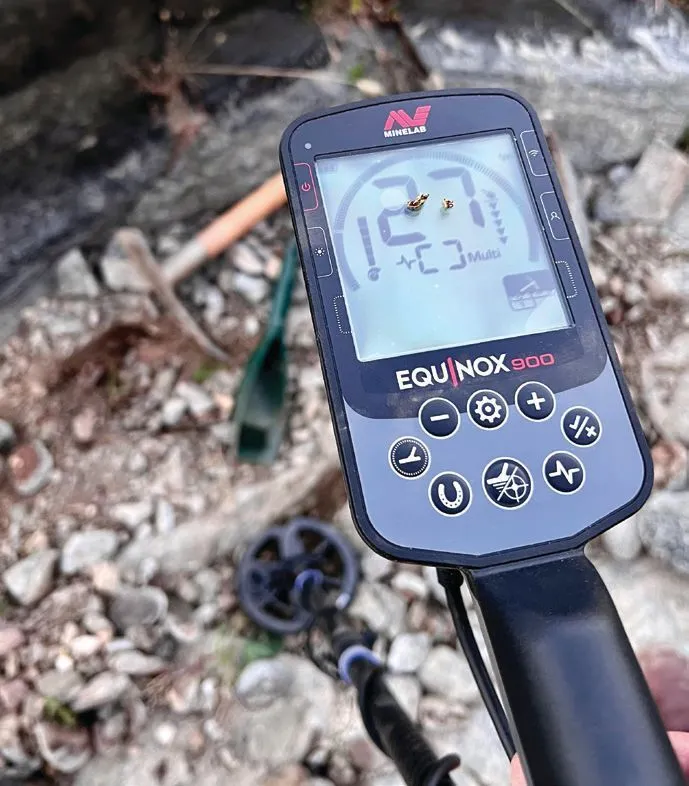
The Equinox 900 comes with me when I'm expecting trash-heavy ground. On this trip, it earned its spot in the pack.
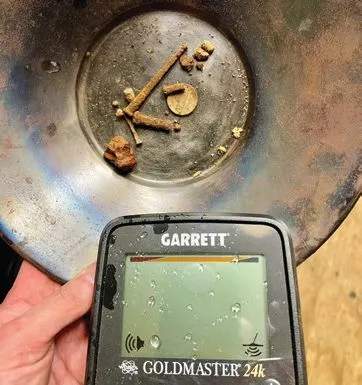
The 24K sorts trash from gold.
Weight: Lighter than Pulse Induction detectors, weighing between 2.5 lb-4 lb, depending on the model, coil, and upgrades.
Portability: Most models either break down or collapse to a size that can easily be strapped to a daypack.
Target Size: The majority of VLF gold detectors will see pieces of gold so small you’d expect to find it in your sluice box or pan, not your scoop.
Battery Life: Expect a longer battery life than most PIs. Many will accept AA, 9v, or small proprietary lithium-ion battery packs, allowing you to spend several days off the grid.
VLF Detector Disadvantages
Ground Conditions: Highly mineralized soil is the arch-nemesis of VLF detectors and the gold prospectors who run them. Gold is most commonly deposited in mineralized quartz veins containing a hodgepodge of minerals including iron, magnesium, lead, cobalt, manganese, copper, and rare earth metals. Some VLF detectors have the ability to notch out ranges for iron, low-value clad coins, and the like.
The hottest, most mineralized ground can render a VLF detector effectively useless. Regardless, expect to dig plenty of hot and cold rocks along with false targets such as rust pockets. I have even struggled with pieces of ceramic tile glazed with, along with flakes of what I believe is, lead or aluminum-based paint.
Depth: While some VLF detectors can detect targets like large relics and caches at substantial depths, when it comes to natural gold, you are basically scanning the top 4-10 inches. Nails and cans can be detected much farther down. The majority of gold I have found with a VLF machine was within the top 6 inches. Out of those, nearly all were found under 3 inches deep.
PI (Pulse Induction) Detectors
Most prospectors I meet start with a VLF machine but eventually set their sights on the next level. If you take the leap into digital prospecting with a metal detector and feel it’s an effective prospecting method, I expect you will as well.
Unlike VLF detectors that have separate transmit and receive signal windings in the search coil, PIs typically use only one winding for both steps. They work by sending a high-amplitude electromagnetic pulse into the ground, quickly switching the coil from transmit to receive to measuring the time it takes for the electromagnetic field induced in the ground to decay. Performing this as frequently as thousands of times per second, the detector can operate smoothly in varying ground conductivity, offering increased power for greater reach, with increased sensitivity to targets at depth.
Popular choices among PI prospecting detectors include:
- Garrett Axiom
- Minelab GPZ7000
- Minelab GPX series (including the GPX5000 and GPX6000)
- Minelab SDC2300
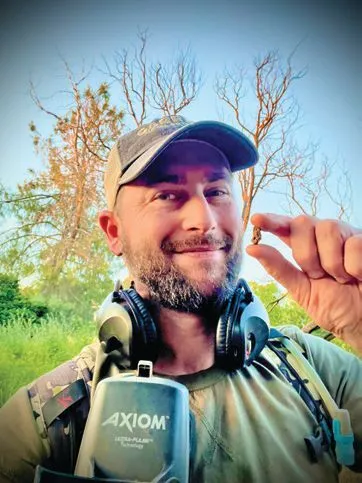
A solid win for the Axiom.
PI Detector Advantages
Ground Conditions: Excellent at balancing out mineralized ground while maintaining sensitivity to metal targets.
Depth: Punch deep to find gold at depths exceeding 3 feet, especially medium to large nuggets.
Learning Curve: Due to the lack of VDI settings found on VLFs, most PIs only require sensitivity and volume adjustments. While some have advanced features such as GPS tracking, audio smoothing, variable pulse timing, and automatic ground balancing, you can fine-tune your machine later as you become more comfortable with it. With a modern PI, one can open the box, charge up the detector, turn it on, and go.
PI Detector Disadvantages
Price: Significantly more expensive than a VLF. $3,000 - $9,000 USD.
Ground Conditions / Target Identification & Discrimination: Lack of VDI and discrimination found in VLFs. There are some exceptions for those with a sharp ear, experience, clever tricks, and trade "secrets." You should expect to dig every single target the machine breaks the threshold on, especially the quiet, soft, repeatable targets that don't ground balance out.
Weight: Heavier than the average VLF. Newer, lighter models like the Garrett Axiom or Minelab GPX6000 still weigh in at around 4.5 lbs. The Minelab GPZ7000 - the industry standard for locating the deepest targets - weighs in at a whopping 7.32 lbs. and is operated with two hands. They even make a body harness to support the weight.
Battery Life: Overall, lower battery life. The Garrett Axiom will give an astonishing 16 hours of use on a single charge. Minelab's lineup provides about 6-8 hours of run time.
Portability and Ergonomics: Minelab's SDC2300 will fold down to a size that can strap to or fit into a pack fairly easily. Garrett's Axiom and Minelab's GPX6000 will collapse down to about 2 feet but are a bit more awkward to pack in with the coil attached. The GPZ7000, you're carrying it into your spot by hand, which may not be an issue with vehicle access or flat terrain.
Ergonomics has been a complaint by many detectorists for years, one which Garrett spent appreciable time addressing in the Axiom. However, throw on a larger coil and your arm may be tired after a full day, as is the case with other PIs.
Target Size: An issue that's largely behind us these days as newer PIs are able to find individual wires of gold, it still holds true for many detectors in the field. PIs will detect gold at a greater depth, but in controlled conditions, I would go all in on any of my gold prospecting VLFs against any PI for detecting the smallest gold. A bet I'd win every time.
Electromagnetic Interference (EMI): Due to the sensitivity of these machines, distant thunderstorms, power lines, passing airplanes or cars, the cellphone in your pocket sending a small packet of data to a cell tower confirming receipt of a text message, and even solar flares can cause the detector to lose stability.
When running the largest coils, seeking the most difficult-to-detect gold, you might want to grab a headlamp and head out for an all-nighter. My largest nugget of 2024 and smallest piece of gold ever detected with a PI were both found after the sun had set; when I was able to crank up the sensitivity, turn up pulse timing, and squeeze every last bit out of my machine.
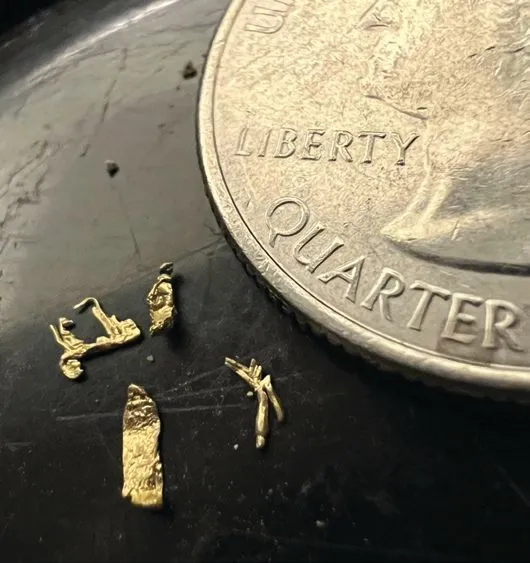
Small, wiry, and loud if you enlisted the right machine. Quarter for scale.
So How DO I Choose Which Detector to Pull?
Some prospectors will detect an area with a VLF until all detectable gold is removed. If time is not an issue and there are plans to work a patch extensively, all trash targets are dug as well. Returning with a PI to find the large, deep gold missed by the VLFs - without the interruptions of square nails and shallow lead shot - can be a killer tactic.
Most trash targets are within range of a VLF detector. PIs detect DEEP. Having the area's top layer of ground clear means that solid signal you get when you return with your PI has a much higher chance of being gold. With higher chances, you're going to have the confidence to dig as deep as necessary to recover it.
While I do use that method in areas I know aren't actively worked by other people - places where time is on my side - in public areas, I often prefer another approach. With a PI as my primary, strapped to my hunting pack you'll find a VLF detector with VDI, coil resting comfortably in the hanging rifle scabbard. If I can't pop the target out of the ground quickly, I'll pop the clips on my pack, swap the PI for the VLF, and get a second opinion. From there, I'll either keep digging or move on depending on what the machines tell me.
Location, Location, Location...
Ultimately, the decision of which detectors I bring in the field is driven by the destination. For each location I intend to prospect, I consider the following factors and perform my due diligence to answer the related questions.
History & Geology
What types of mining operations took place at, upstream, and uphill from the location?
Is the area known for hardrock mining? If so, I should expect there to be quartz float, tailing piles, and any gold found to be in rough quartz. Checking whether the miners were chasing free mill gold vs. gold sulfides shouldn't be overlooked.
If ancient river gravels were their target, I attempt to identify the epoch they were deposited during, and the type of rock being eroded upstream at that time. Was it igneous, metamorphic, or sedimentary? Mafic rock can be particularly troublesome for VLF detectors as they can be high in iron and magnesium. Some of these deposits are so troublesome, even the best PI detectors will struggle. Felsic rock, while generally easier to detect amongst, can present its own challenges if there are high amounts of magnetic iron oxide minerals like magnetite present.
Then there are situations in which nightmares are made of: iron-rich cemented mafic gravels at a hydraulic pit turned into a public shooting range/dump. That will test the patience of the most experienced prospector.
What size gold were the old-timers extracting? If flakes and the smallest pickers, ground permitting, I might start with a VLF.
Guests
When I have guests with me that don't have their own machine they prefer, I look at several factors before making a suggestion. Their experience, size/age, and the ground we're working.
For smaller children, it's hard to beat a Minelab Gold Monster 1000 with an upgraded collapsible carbon fiber shaft. Light, simple, time-proven, hard to mess up the settings, and instead of a large VDI range, you are presented with two possibilities: not gold, maybe gold. That's good enough here. The fewer distractions, the better.
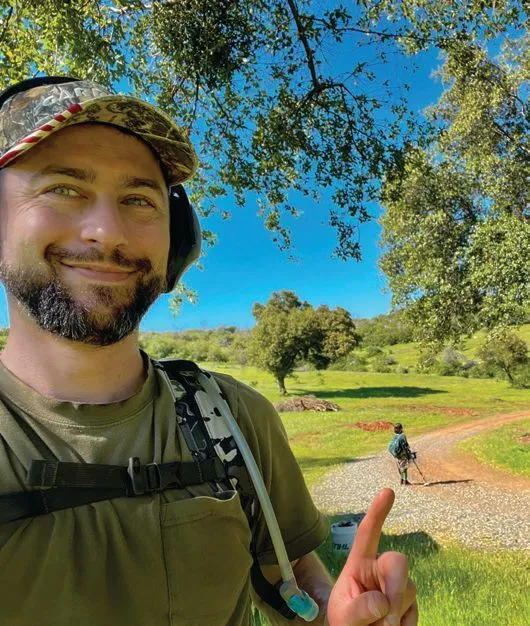
That's my daughter Aurora, out front with the Gold Monster. Light machine, no distractions—just the way she likes it.
For adults or youths large enough to maneuver it, I try to get a Garrett Axiom in their hands if conditions are appropriate. It's powerful enough for the best operators and simple to use. Being a PI, it forces those who are new to learn how to pinpoint and recover a variety of targets, even if all nails and bullets. If the ground is too trashy, moderately mineralized, or they are wanting to learn more about more advanced settings, the Garrett Goldmaster 24k is always a favorite.
Location Experience

Every detector on this boat has a job. The trick is knowing which one to grab, for what, and when.
When heading to a new location, I perform as much intel as possible, but sometimes the trip is decided at the last moment. I don't like playing Sophie's choice when it comes to tools to find gold. When unsure of what I'll face, I bring all the weaponry. You can scour maps and satellite imagery for days, but when your boots hit the ground, it's never quite like what you expected.
Having been to a location before, we'll assume most if not all of the boxes above have been checked off. For detectors I choose for me, it's a bit different than when I have company with me.
If I know the spot holds mostly tiny gold on bedrock, I'm bringing a higher frequency VLF like a Garrett Goldmaster 24k or Fisher Gold Bug 2. The Gold Monster 1000 is great for this task, but I prefer the added sensitivity and fine-tuning of the other two.
In the oak savannah with quartz float with potentially very large, very deep gold, don't be surprised to see me two-handing a Minelab GPZ7000.
Trekking up a steep mountain through thick brush to reach the entrance of an old mine shaft or ancient bench gravels, you can almost guarantee I'll have a Garrett Axiom collapsed and strapped to my pack. The Equinox 900 might be there too - those miners left a lot of trash.
If I pack a wetsuit and snorkel, I won't be without my waterproof Equinox 900 with its built-in flashlight and vibration mode. In that scenario, I'm diving, so I may leave every other detector at home. You can't hear your truck alarm sounding off with your head in the river—sometimes less is more.
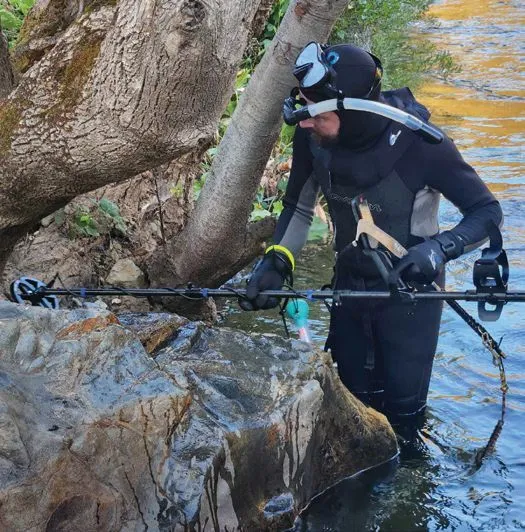
Snipe detecting with my waterproof Equinox 900.
Efficient Use of Your Time
Consider the above, take a step back, and form your own strategy. If you become so frustrated with the ground or terrain that you want to pack up and seek a more comfortable location to prospect, I assure you, others have done the same. Detectable nugget-bearing virgin ground is the holy grail. The closest you will likely come to prospecting it is by working areas others before you walked away from. The questions you have to ask yourself are: how bad you want it, how much belief you have in the research you performed, and how well you know and trust your equipment.
Using a metal detector to find gold is not for everybody. Most give up before finding success. Luck plays a far smaller part than you may think. Do your research and choose the appropriate tools. Know, not think, the next target is gold - no matter how many targets before it were not - and you too can join the club.
Some wise advice from a well-respected digital gold prospector with experience I could only hope to gain:
"A lot of people quickly get tired of digging trash targets. The worst thing for me as a prospector is if after an hour, I have nothing. That tells me the area has been well detected. If you're telling me 'we found gold here,' and I'm digging lead pellets, my brain says there has to be gold left until those lead pellets are gone. I'll happily dig lead pellets all day long knowing each and every one of them could be a gold nugget. If someone tells me nuggets were found there, and I'm finding targets, I know I'm finding gold. It's not a matter of if, it's when. You have to have faith in your ability and you do have to have some persistence." - Steve Herschbach
Thank you, Steve. Your generosity and knowledge helped me stick with it, even when every fiber in my body said, "Nikko, call it a day." When those thoughts of quitting entered my mind, I began to doubt what metal detector I was using or how I was using it. But feeling my pocket full of lead, I knew it was only a matter of time.
By Nikko Vellios, a lifelong nemophilist and polymath who takes an objective, often technology-driven, approach to the challenges of outdoor activities. When not prospecting, he and his two children enjoy fishing, hunting, and foraging California’s Sierra Nevada Motherlode.





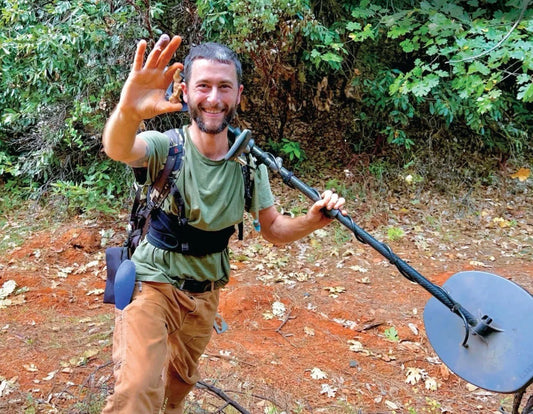


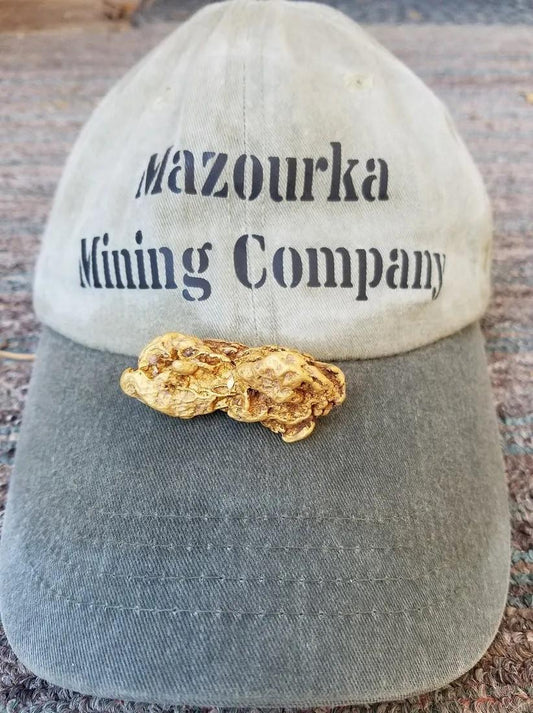

0 comments